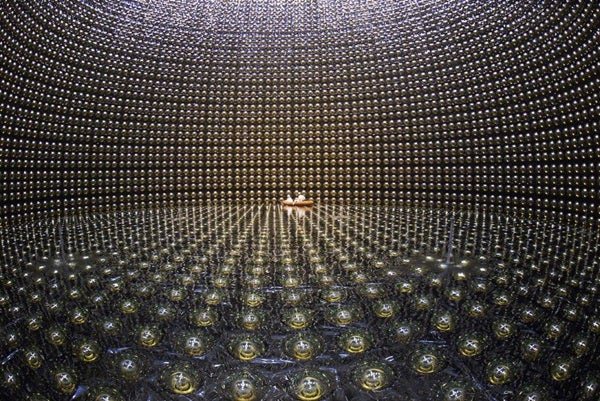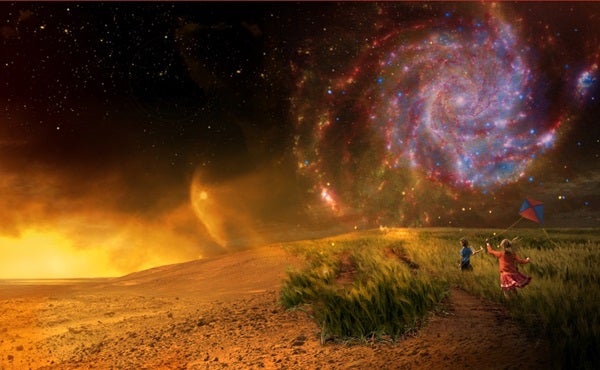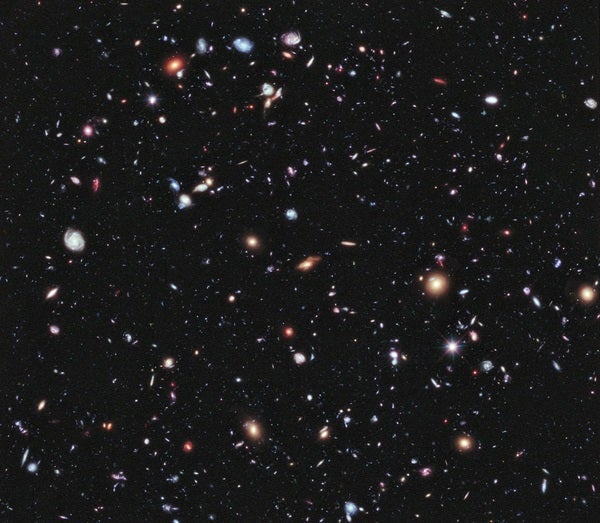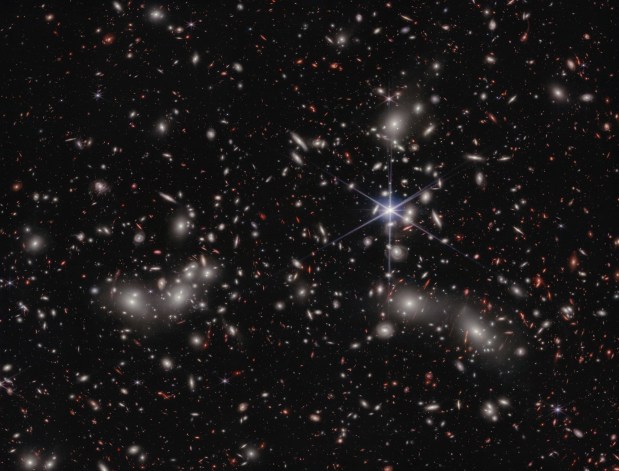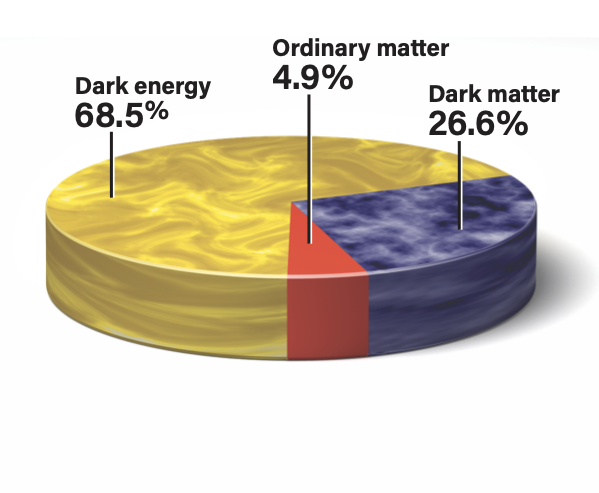This story comes from our special January 2021 issue, “The Beginning and the End of the Universe.” Click here to purchase the full issue.
The universe, like everything else, was born, matures, and will eventually die. But exactly how and when that death will occur remains one of the greatest mysteries in the field of cosmology.
Many scientists have previously categorized cosmic time into different eras. Fred Adams and Greg Laughlin, for example, wrote a popular science book called The Five Ages of the Universe (Free Press, 2000). According to the pair, the first era was the Primordial Era, during which the Big Bang occurred, kicking off the cosmos’ ongoing expansion.
The next era, which we’re currently in, is known as the Stelliferous Era, in which matter is organized into stars, planets, nebulae, and larger constructs, such as galaxies and galaxy clusters. This era is hypothesized to run from about 106 to 1014 (1 million to 100 trillion) years after the Big Bang. Once all stars exhaust their hydrogen fuel and go dark, we will have entered the Degenerate Era. This period is hypothesized to take place between 1015 and 1039 (1 quadrillion to 1 duodecillion) years after the Big Bang. It will be dominated by stellar remnants such as black holes, white dwarfs, brown dwarfs, and neutron stars. As time unceasingly marches on, the universe will continue to cool and darken; eventually, life and matter as we understand it will likely come to an end.
The universe fades to black (holes)
But what happens after that? White dwarfs, brown dwarfs, and neutron stars are expected to eventually die through a process known as proton decay, when the subatomic particles they are made of literally fall apart. Cosmologists predict this will occur late in the Degenerate Era, as the half-life (the time it takes for half of a substance to decay) of a proton is thought to be about 1034 years. And when the last remnants of stars rot away at the particle scale, only black holes will remain, dominating what is left of the universe.
The Black Hole Era, which is predicted to last from about 1040 to 10100 (10 duodecillion to 1 googol) years after the Big Bang, spans an unimaginably long stretch of time, even for astronomical timescales. Imagine a universe with no bright stars, no planets, and no life whatsoever — that’s the Black Hole Era. Very little heat and light will linger in the universe at this point.
Black holes are so dense and massive that they produce tremendous distortions in the fabric of space-time, forever capturing anything that gets too close. And during the Black Hole Era, these dark beasts’ gravitational influence will only increase as they gobble up lingering remnants of ordinary matter.
However, even for tiny black holes, this process would still take an absurd amount of time. For a stellar-mass black hole, it could take up to 1064 years, and for the largest supermassive black holes, it might take as long as a couple googol years — again, that’s a 1 followed by 100 zeros — or possibly even longer. Astronomers simply don’t have the observational evidence to know for sure.
Everlasting darkness
After the last black hole has faded away, it’s hard to even comprehend what the universe will be like. The concepts of space and time barely have any real meaning once the last structures have disappeared. The period following the demise of black holes is known as the Dark Era, which is expected to begin sometime around 10101 years after the Big Bang, though its start depends on how long black holes last. So when — and if — this era ends is anybody’s guess.
But despite interactions between subatomic particles being incredibly rare, the occasional collision should still occur. In the absence of protons and neutrons, an electron will sometimes slam into a positron — the positively charged, antimatter counterpart of an electron. This may briefly form an atom of the bizarre element positronium, which is unstable and will quickly destroy itself when the matter and antimatter annihilate each other.
Many cosmologists think the universe will continue to cool, eventually playing out the so-called Big Freeze, when there is no heat remaining anywhere. (See “The Big Crunch vs. the Big Freeze,” page 50.) The cosmos will eventually reach a point of total disorder, or maximum entropy. The Second Law of Thermodynamics, which states that the entropy of a closed system (like the entire universe) can only increase, will have finally reached its logical conclusion.
Is this cosmic fate guaranteed?
No. Much of the above is theoretical or based on ideas that are difficult or impossible to empirically test.
Such a catastrophic collapse would kill any lingering life in the universe — though it’s tough to imagine life surviving to this point anyway. Perhaps the Big Crunch would even be followed by another Big Bang, birthing a fresh universe from the ashes of our own.
However, most scientists think the Big Crunch is an unlikely fate. Instead of being guided by gravity, the universe appears to be under the influence of dark energy (see “The mystery of dark energy,” page 53), causing space itself to expand at an accelerating rate and making the Big Freeze a more likely end.
These are difficult — and even upsetting — scenarios to ponder. But keep in mind, history has taught us that these theories may someday be superseded by others, markedly changing our predictions about the distant future. Perhaps our cosmological conjectures are still missing a major consideration or two.
Maybe, just maybe, the universe will end with neither death nor rebirth. Indeed, there could be a plot our imaginations have yet to envision, one where the physical laws of the universe allow matter, and life, to press on indefinitely.


